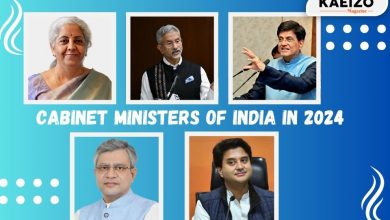Raj Shamani Vijay Mallya: A Deep Dive into Truth

In a rare and honest four-hour conversation, Raj Shamani and Vijay Mallya come face-to-face in one of India’s most-watched digital interviews. Raj Shamani, a young creator and entrepreneur, hosts this record-breaking talk with Vijay Mallya—a controversial business tycoon known for founding Kingfisher Airlines and later facing serious financial and legal troubles. This long-form blog unpacks their conversation in a way that school and college students can easily understand, and draws powerful life, money, and media lessons from it. More than just a corporate saga, it’s a story of ambition, risk, accountability, and navigating public scrutiny.
📺 Watch the full podcast here
Who Are Raj Shamani and Vijay Mallya?
Raj Shamani is a digital content creator, motivational speaker, and entrepreneur. With millions of followers on Instagram and YouTube, he is known for his candid interviews with thought leaders, celebrities, and entrepreneurs. His platform ‘Figuring Out’ helps people understand life and business through storytelling.
Vijay Mallya, once a celebrated businessman, was the chairman of United Breweries Group and the founder of Kingfisher Airlines. Often in the limelight for his lavish lifestyle and outspoken nature, his story took a dramatic turn when his airline collapsed, and legal cases mounted against him. He’s lived in self-imposed exile in the UK since 2016.
1. The Birth of Kingfisher Airlines
In 2003, Mallya launched Kingfisher Airlines. It wasn’t just an airline—it was marketed as a lifestyle. With cutting-edge aircrafts, gourmet in-flight meals, in-seat entertainment, and the now-iconic red-uniformed air hostesses, Kingfisher aimed to redefine domestic air travel in India.
But behind the glamor were significant investments and loans. According to Mallya, he envisioned global expansion, intending to position India as a luxury aviation hub.
Student Lesson: Dreaming big is important, but success also relies on evaluating market demands, building strong teams, and ensuring financial sustainability.
2. When Things Went Wrong
By 2008, the aviation industry globally was rocked by a financial meltdown. Rising fuel prices and declining passenger traffic hit hard. For Kingfisher, which had acquired Deccan Airlines to expand its domestic reach, the costs spiraled.
Mallya claims political pressure played a role. He reveals that when he requested government support or permission to restructure operations, there was no flexibility. “I was told not to sack employees, even when losses were growing.”
Takeaway: External factors like regulations and economic downturns can affect even the best businesses. That’s why risk management and scenario planning are essential.
3. Understanding Business Debt vs Personal Debt
This distinction was one of the most debated parts of the interview. Mallya insists that the debt of over ₹6,000 crores was corporate—borrowed by Kingfisher Airlines, not by him personally. He states that he has paid back ₹14,000 crores from selling assets.
“I am being portrayed as a thief when in reality, I tried to rescue the company with my own funds,” he says.
Student Insight: When working in groups or managing startups, understand the legal and financial boundaries of responsibility. Keep personal and professional accounts separate, and always document your agreements.
4. Leaving India: Escaping or Planning?
One of the most misunderstood elements of Mallya’s story is his departure from India. He says it was a scheduled family trip, not a midnight escape. The media framed him as an absconder, but there was no court notice or summons at the time of his departure.
“I left openly and legally. My passport wasn’t revoked. There was no ban. But later, they called me a fugitive.”
Life Lesson: Perception often overshadows truth in the digital age. It’s vital to communicate clearly and preserve evidence for future reference.
5. The Watch That Went Viral
Mallya’s choice to wear a luxury watch worth ₹40 lakh during the podcast sparked public debate. Was it tone-deaf? Was he flaunting wealth in the face of public debt?
The memes flooded in. Yet, some praised him for staying calm and answering questions without arrogance.
Modern Lesson: In today’s media-driven world, even the smallest details—like a watch—can speak volumes. Whether you’re in an interview, a college presentation, or posting online, be conscious of how symbols (dress, gadgets, words) represent your values.
6. Internet Reactions and Media Culture
This interview is a turning point for India’s digital journalism. It crossed 20 million views and became a trending topic. Mainstream media, which had for years painted Mallya with one brush, suddenly had to acknowledge his side of the story.
Creators like Raj Shamani are shaping public discourse, often with more trust than traditional news.
Tip for Students and Creators: Be thoughtful storytellers. Ask questions that matter. Let people speak fully. A fair platform can change reputations and open minds.
7. Facing Legal Challenges
The charges from Indian authorities include money laundering, default, and fraud. Mallya defends himself by claiming he never ran away from the legal system and is ready to appear if given fair assurances about his trial and personal dignity.
His UK extradition appeal continues, and the outcome may define how future high-profile business cases are handled across borders.
Critical Thinking Tip: Dig beyond the headlines. Explore multiple perspectives before forming judgments—whether it’s about business failures or political issues.
8. Why This Interview Matters
This wasn’t just an interview—it was a cultural moment. Here’s why:
- For Creators: It shows the influence and credibility content creators can have.
- For Mallya: It was a chance to tell his story without being edited.
- For Young Minds: It’s a reminder that business and life aren’t always black and white.
This podcast bridged generations—parents who remember Kingfisher, and Gen Z who’ve only seen memes about Mallya. Now, both heard the full story.
9. Quotes & Timestamp Highlights
“Call me a fugitive—I choose that term—but not a thief.” “I have paid back more than ₹14,000 crores; the rest is company debt.”
Key Moments:
- 0:45 – Warm-up & tone setting
- 30:00 – Kingfisher’s origin
- 1:15:00 – Business obstacles
- 2:10:00 – Legal responses
- 3:20:00 – Viral watch moment
- 3:45:00 – Hopes for return to India
10. Lessons for Students and Creators
| Audience | Lesson |
|---|---|
| Students | Think long-term. Know the consequences of actions. |
| Creators | Ask bold questions. Stay respectful. |
| Professionals | Keep personal/professional lines clear. |
| Future Leaders | Don’t hide from hard conversations. |
| Entrepreneurs | Build brands—but prepare for crisis too. |
11. Bonus: Financial Habits Students Should Build
Mallya’s story has money lessons too. Here’s what students can do:
- Create a monthly budget: Know your income and expenses.
- Avoid debt traps: Don’t use credit casually. Understand interest.
- Build savings early: A small emergency fund helps in tight spots.
- Track spending: Use simple apps or Excel sheets to stay alert.
- Learn about loans: Before borrowing, research repayment plans.
12. Raj Shamani’s Style: The New-Age Journalism
Raj’s approach shows why Gen Z connects with creators more than anchors. His calm demeanor, structured flow, and uninterrupted dialogue made this interview a success.
Learning Point: Journalism today needs empathy, curiosity, and courage—not just microphones and scripts.
Suggested Images with Alt Tags
- Screenshot from the podcast (Raj & Mallya in conversation) Alt: Raj Shamani and Vijay Mallya in discussion
- Infographic: Kingfisher Airlines timeline Alt: Rise and fall of Kingfisher Airlines
- Student workspace with money planner Alt: College student creating a budget plan
Suggested Links
Internal: Simplicity and Financial Security: Rohan’s Wake-Up Call
External: Understanding Money Laundering (Investopedia)
Final Reflection
The Raj Shamani Vijay Mallya podcast is a defining piece of content. It’s a powerful mix of journalism, emotion, and education. It challenges media stereotypes, educates viewers on business and law, and inspires students to think critically.
Mallya’s story is not just about flights or debts—it’s about decisions. For students, it’s a lesson in caution. For creators, it’s a lesson in responsibility. For India, it’s a lesson in listening.
Whether you agree with Mallya or not, one thing is clear—truth needs space. And platforms like these make space for stories that otherwise get lost in noise.




